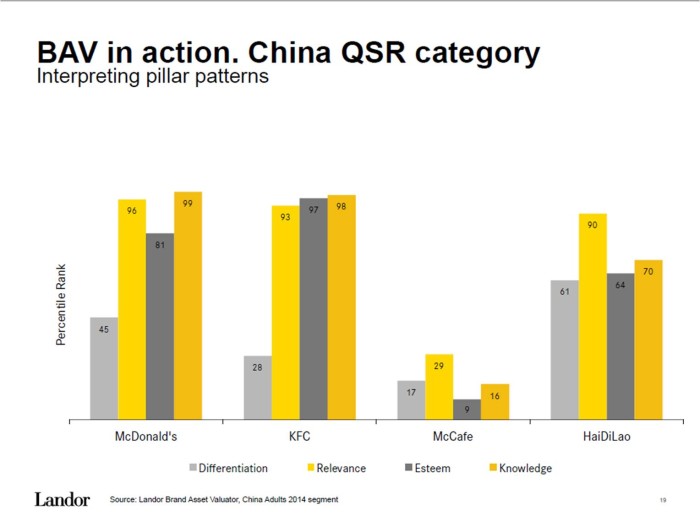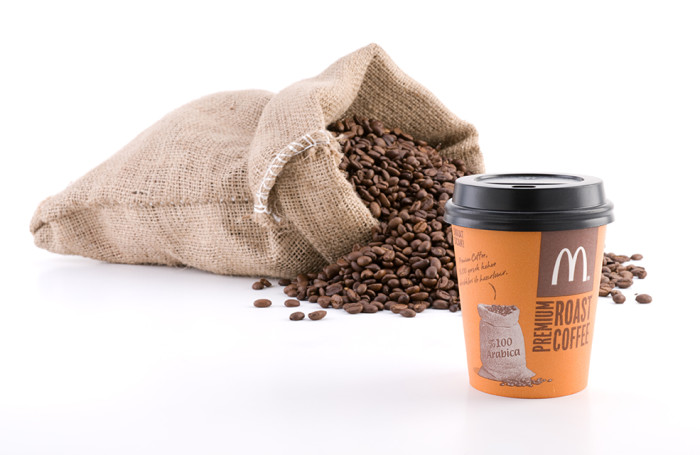



Restless progression: How McDonald’s always bounces back
share on
Despite facing a number of recent challenges, data and experts suggest the McDonald’s brand will once again hold strong in the long run. So what is it about McDonald’s that has kept the brand going for so long, and how does it keep bouncing back?
Ahead of Marketing magazine’s year-end event The Futurist Live! featuring senior marketing leads from McDonald’s, MasterCard and other brands, we asked branding experts what they thought was the secret behind the McDonald’s brand.
“They’ve played the monolithic brand card very well,” said Nick Foley, president of SE Asia Pacific and Japan, at Landor Associates, a brand consultancy. Marketing spoke with Foley and Charlie Cookson, strategist at Landor Associates, to find out some of the reasons behind the brand’s longevity.
It becomes clear that even with the current negative associations circling the brand, it continues to hold its own in a highly competitive category. The fast-food giant has faced a series of PR challenges recently, including the food scandal with meat supplier Husi Shanghai in China. But has the media backlash been fair?
“I think they’re unfairly labelled … and because they are a very mass market brand they can easily be a target,” Foley argued.
According to Landor Associates’ “Brand Asset Valuator” (BAV) – an online survey of consumer likes and dislikes about brands – McDonald’s is still holding strong against competitors in key markets across a number of areas, including “relevance”, “knowledge” and “esteem”. Look at the charts below.
“It’s unusual to see a brand with this kind of global footprint that has been around for this long with these levels of relevance and differentiation,” Foley said.
So how do they do it?
McDonald’s branding success and longevity boils down to what Foley calls a “restless progression”.
About 10 to 15 years ago the brand’s key selling point was its consistency and what Foley calls the “quarter pounder pricing principle” – the same products and American style were available in every store. Now, the game has changed and McDonald’s has shown it’s able to make the switch to increased innovation and adaptation.
“They’re not afraid of being innovative and that’s really worked for them” he said.
A key area McDonald’s must focus on, as indicated by Landor’s BAV survey, is differentiation from competitors by continued expansion of offerings. McCafé, first launched in Australia in 1993, is one way the brand did exactly that.
According to McDonald’s’ 2001 Annual Report, the “McCafé coffee concept” is designed to allow customers to “enjoy premium coffees, cakes and pastries – all at a value price compared with typical coffeehouses” and to “have a cosmopolitan atmosphere with distinct adult appeal”.
The McCafé brand has developed to the point that from 2015, McCafé-branded bagged coffee beans will be sold in US retail stores in partnership with Kraft. It will be marketed as a premium product.
Foley said: “I think it’s got really hard. That’s why with their brand architecture they have brought in things like McCafé because it allows them to have a slightly different conversation with their target audience … you would not be scoring that level of relevance (on the BAV test) if you do not have menu items that cater to a wide variety of needs.”
Adds Cookson: “They seem to have their finger on the pulse. They seem to know what’s happening at any one time.”
The great comeback kid
McDonald’s has indeed remained relevant across more than 30,000 restaurants in 120 countries.
Lawrence Chong, CEO and co-founder of design consultancy Consulus, believes “the secret sauce of McDonald’s marketing power is the company deeply understands the idea of globalisation”.
Chong told Marketing he sees McDonald’s as “the great comeback kid”.
Many people in the past have dismissed McDonald’s, but time and again, it has always found a way to make a comeback by being ready to discard an earlier doctrine in terms of thinking in product and messaging.
Chong explains: “They make great efforts to localise their offerings and messages by paying close attention to the ground. For example, McDonald’s does not even sell its signature product in India – you won’t find beef burgers in their restaurants because cows are considered sacred.”
Maintaining this balance between consistency and diversity is the key to McDonald’s continued strengths, according to Andrew Hipsley, SVP and chief brand officer for McDonald’s Asia Pacific, Middle East and Africa.
It comes down to the brand’s “think global act local” approach, Hipsley said in an interview with Marketing. “For example, in Asia we serve a bigger range of spicy products and generally more chicken options, in India no beef and a bigger range of vegetarian options, Halal in Muslim markets, and chicken and rice in lower socio-economic markets.”
According to Hipsley, enhancement of the company’s existing strategic global “plan to win” “will focus on affordable and convenient, relevant and differentiated menu choices, a modern and relevant restaurant experience and being a positive contributor to the local community”.
Over the next 18 months, McDonald’s is embarking on a rebranding campaign focused on building customer trust through transforming its service, marketing and operations.
For example, “web and mobile ordering for delivery will play a big role in transforming our customers’ experience before, during and after their visit”, said Hipsley.
Recent efforts as part of the overall strategy to combat brand difficulties, include the launch of the “Our Food Your Questions” campaign in America last month. Pioneered in Canada, it also remains a major programme in the Australia and New Zealand markets.
Aimed at increasing food transparency, the campaign invites customers to ask any questions about McDonald’s food over social media. It opened with consumers asking questions such as, “Is there ‘pink slime’ in a Chicken McNugget?” “Are there worms in your beef?” and “Why doesn’t your food rot?”
“It’s about embracing your negatives and turning them around into positives in a brand sense,” Landor’s Cookson said.
This approach to transparency indicates McDonald’s is not afraid of tackling the big issues head on to remain relevant and keep the conversation going with consumers. While fearlessness and adaptation are crucial for survival, McDonald’s’ core principles remain the same.
“The success of our brand so far has been the result of our relentless focus on brand relevance and brand consistency – built on our founder Ray Kroc’s legacy of “QSC and V” (or quality, service, cleanliness and value),” Hipsley said.
This relentless focus on balancing adaptation and innovation with consistency has ultimately kept McDonald’s relevant across many markets over the years.
Hipsley will be sharing key insights on the future of marketing and how to stay relevant with the changing consumer at the second annual The Futurist Live! Conference on 2 December at the InterContinental Singapore.
To register for the Futurist Live! 2014, please contact Czarina Solomon at czarinas@marketing-interactive.com, call +65 6423 0329 or click here.
For sponsorship opportunities, please contact Che Winstrom at chew@marketing-interactive.com or +65 6423 0329.
To discuss the agenda, enquire about presenting or to suggest topics, please contact Andrew Davy at andrewd@marketing-interactive.com or +65 6423 0329.
share on
Free newsletter
Get the daily lowdown on Asia's top marketing stories.
We break down the big and messy topics of the day so you're updated on the most important developments in Asia's marketing development – for free.
subscribe now open in new window



